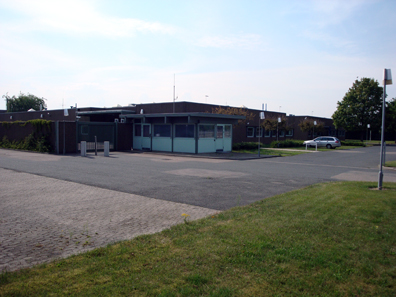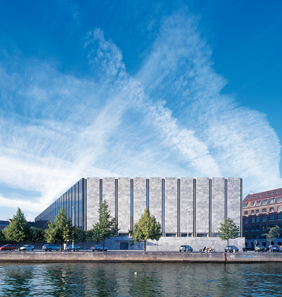by Hans Denkov
October 16, 2012 – As an introduction and to better understand the outcome I think it is useful to give a little information about the Royal Danish Mint. The Danish coinage is a very old one, actually I guess one of the oldest in Europe with the same state entity having issued coins for more than 1000 years, although the organization of the coin striking quite naturally has changed considerable over the centuries.
The immediate roots of the present Royal Danish Mint was the Royal Mint, which was established as a royal, i.e. governmental, entity back in 1739. The mint was responsible to the Ministry of Finance and was integrated in the state budget (Finance Bill). In the latter part of the 20th century this became somewhat strange among other things because it became somewhat awkward for the Ministry of Finance to be responsible for an industrial production entity. Since the only customer was the Danish central bank (Danmarks Nationalbank), which was responsible for supplying the banking sector with cash, i.e. banknotes and coins, an obvious solution would be to pass over the responsibility for the coin production to Danmarks Nationalbank. This happened back in 1975. I may add that the same change took place in a number of other countries, i.e. Austria, Sweden and Norway.
The Danish Mint. Photo: Hans Denkov.
When Danmarks Nationalbank took over the Mint it was decided, and agreed with the Ministry of Finance, that the coin production should move to a new facility since the then facility was out of date. A new mint was built the following years in a suburb of Copenhagen (approx. 20 km away from the central bank). The coin production could not be housed in the central bank building at that time since it was considered to be suitable and profitable to continue producing blanks and that required a lot of space and very special facilities, i.e. furnace and rollers.
Thus, the new mint facility continued to produce blanks, and in addition it was responsible on behalf of Danmarks Nationalbank for the supply of coins to the banks, i.e. the commercial banks would come to the mint to collect coins that they needed or deposit coins that were in surplus. The mint was thus acting as a kind of a cashiers department regarding coins. I think this is somewhat unique, at least in Europe.
After moving to the new facilities in the late 1970s, the mint was rather busy with the production of low denomination coins and preparation for replacing a low denomination banknote with a coin. Then during the 1980s the mint was also preparing a comprehensive reform of the Danish coinage. The proposal of Danmarks Nationalbank was accepted by the government and parliament in 1989 and meant that the lowest denomination coins (approx. of the value of 1 and 2 eurocents) be abolished and demonetised and the lowest banknote be substituted with a coin. This project took several years to accomplish and the mint was running at full capacity and an increase in staff number was necessary due to the work load. But in the mid-1990s it was completed and since then Denmark has an efficient coin range and even the lowest denomination has a suitable value. This was good for society and appreciated but in a narrow sense bad for the mint since the demand for coins decreased considerably and so did the number of staff. In addition it became obvious that producing blanks ourselves was not profitable, on the contrary. This was thus discontinued in the late 1990s.
I may add on a personal note that I am an economist by training and have been working in Danmarks Nationalbank in that capacity for many years. In the 1980s I was responsible for the project of the comprehensive overhaul of the coin system. Consequently, I had a very close relationship with the mint at that time. Later I was following the implementation of the coinage reform, and on the committee overviewing and making proposals regarding commemorative coins and possible design amendments to the range of circulation coins. So despite having my main task in the markets area being department head in that field, I continued to follow the mint closely since I had got a strong interest in that.
In 2006, the governors of Danmarks Nationalbank asked me if I was willing to take over the position as mint director. The reason for that was first and foremost that I had a very good knowledge of the Mint and the problems and challenges facing the mint.
In the past few years demand for coins stabilized so only very little production of coins was needed. There may be several reasons for that situation but I think the most important factor is really the increased use of payment cards. People in general, but especially the young generation, have developed a strong preference for payment cards and are using those even for small transactions.
In 2010 I informed the governors that it was my intention to retire in the summer 2012 when I would turn 67.
Meanwhile the board of governors decided to evaluate the possibility of merging the coin production with the banknote printing works, which for historical reasons are located in the main building of the central bank, and to pass over the distribution of coins to the cashier’s department, which was handling banknotes. This evaluation resulted in the decision in late 2011 to follow this path.
Danmarks Nationalbank. Photo: Danish Nationalbank.
This is a good solution since the separate coin production facilities away from Danmarks Nationalbank could be vacated and all activities of the central bank being together in just one place, the building of Danmarks Nationalbank. It was natural to put the handling of banknotes and coins in regard to the banking sector under one hat, the cashier’s department. The coin production is now merged with the production of banknotes and staff can be used more widely and efficiently, i.e. both in production of coins and notes. It has also made it possible to reduce staff.
In the first half of 2012 the decision was carried out, i.e. the necessary equipment was moved to central bank and so was the stock of coins, newly minted and also coins in stock for recirculation. Concurrently with this I had a close contact with the management of the printing work making them familiar with coin production and the mint industry in general. I trust they are well equipped to meet the challenges of the industry, and that the new set up will well.






